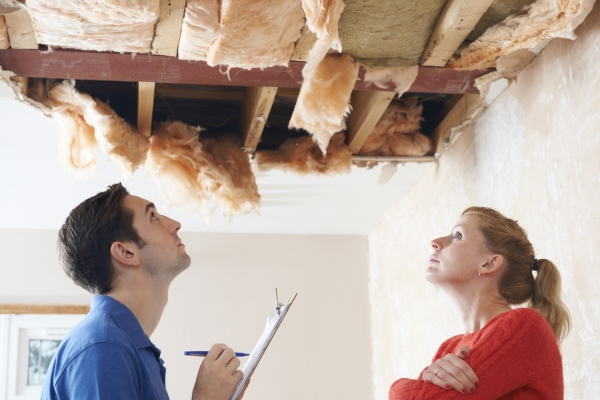
Assessing rental property damage after a problematic tenant is crucial for landlords. Rainbow Restoration outlines key steps to ensure thorough evaluation and recovery.
|
Becoming a landlord and renting out a few properties—like single-family homes, duplexes, or condominiums—can be rewarding and profitable, especially for retirees. While most of your tenants will take care of your property and work with you if something needs repair, occasionally you might get a tenant who allows a minor problem like a water leak to go unchecked until it causes major damage. Or worse, you may have a renter who does deliberate damage to your property. Since you may not even be aware of the problem until the tenant moves out—especially with a long-term rental—it’s important to be able to assess which problems are normal wear and tear and which ones count as property damage.
Assessing Normal Wear and Tear
When preparing your property for rental, you may have done some cleaning yourself or hired a professional to perform move-in cleaning services to make sure everything was spic-and-span when the tenant arrived. This is also a good time to make notes and take pictures to show the condition of the property before it’s occupied. But no matter how well a renter takes care of your property, normal wear and tear is going to occur. This includes:
- Scuff marks on floors, baseboards, and walls.
- Worn areas or small stains on the carpet.
- Fading of drapes or carpet due to sunlight exposure.
- Dirty or loose grout in the bathroom or kitchen.
- Loose doorknobs or cabinet handles.
Since normal wear and tear occurs because of ordinary use, most of it can fixed with some minor repairs, new paint, and a deep move-out cleaning service. If you’re renting a fully or partially furnished property, consider the age of the damaged item (new vs. used) and the original cost of the item ($30 bookshelf vs $500 couch) when determining if the item should be repaired or replaced.
Accidents Happen
Even the best tenants can have accidents that cause damage to your property. But if you have a good relationship with your renter, they’ll let you know about an accident quickly and before it leads to more serious damage. But if a tenant causes accidental damage, then refuses to let you know about it, they can be held responsible for any additional damage that occurs. When assessing if a tenant is responsible for the cost of accidental damage:
- Don’t assume the worst, especially if the tenant has a history of trustworthiness.
- Review the information in your rental lease agreement concerning tenants informing the landlord of problems on time.
- Make sure the accident wasn’t caused by a lack of routine maintenance.
- Determine if a delay in reporting the accident caused additional damage.
Related Topic: Condo Repair Responsibility & Etiquette
Assessing Property Damage
If you have a bad tenant, they probably didn’t maintain your property in the way agreed to in their lease. In some cases, tenants like this might even cause damage to rental property on purpose. If this happens, it’s important to assess and document everything with both a list of damages and photographs. Examples of renter-caused property damage include:
- Broken tiles or damaged enamel in the bathroom or kitchen.
- Large stains (especially from ink or bleach) or burns on carpet.
- Holes in the doors, ceilings, or drywall.
- Missing or damaged blinds and curtains.
- Missing screens or broken windows.
- Broken or missing furniture (if furnished).
- Pet damage to carpet, furniture, or curtains (especially if there’s a “No Pets” clause in the lease).
The cost of these repairs can be taken out of the tenant’s security deposit. If you choose this method of payment, be sure to supply the tenant with an itemized list of what you’re charging for the repairs or to buy a replacement. If the damage is due to an accident—but you feel the tenant is at least partially responsible—you may be able to reach an agreement between the two of you on how to repair the damage. As a last resort, you may have to sue a tenant for property damage, so be sure you know your rights as a landlord.
Rainbow Can Help You Clean Up
Even the damage done by the worst tenant is no match for Rainbow Restoration’s deep cleaning services. Our sanitizing process includes the use of an EPA-registered disinfectant applied by our IICRC-certified service professionals. If the carpet is a mess, our carpet cleaning services will remove the dirt and stains you can see, plus the mold, allergens, and other contaminants you can’t see. We can even remove the lingering smells from pets, trash hoarding, spoiled food, mildew, smoke, and biological pollutants. We help you make sure your rental property is clean, sanitized, and ready for your next tenant. To find out more, call us or request an appointment online.
